Learn how to make blue “crystal meth” rock candy inspired by Breaking Bad. It’s easier than you think, and the results look AND taste delicious. Perfect for costume and viewing parties!
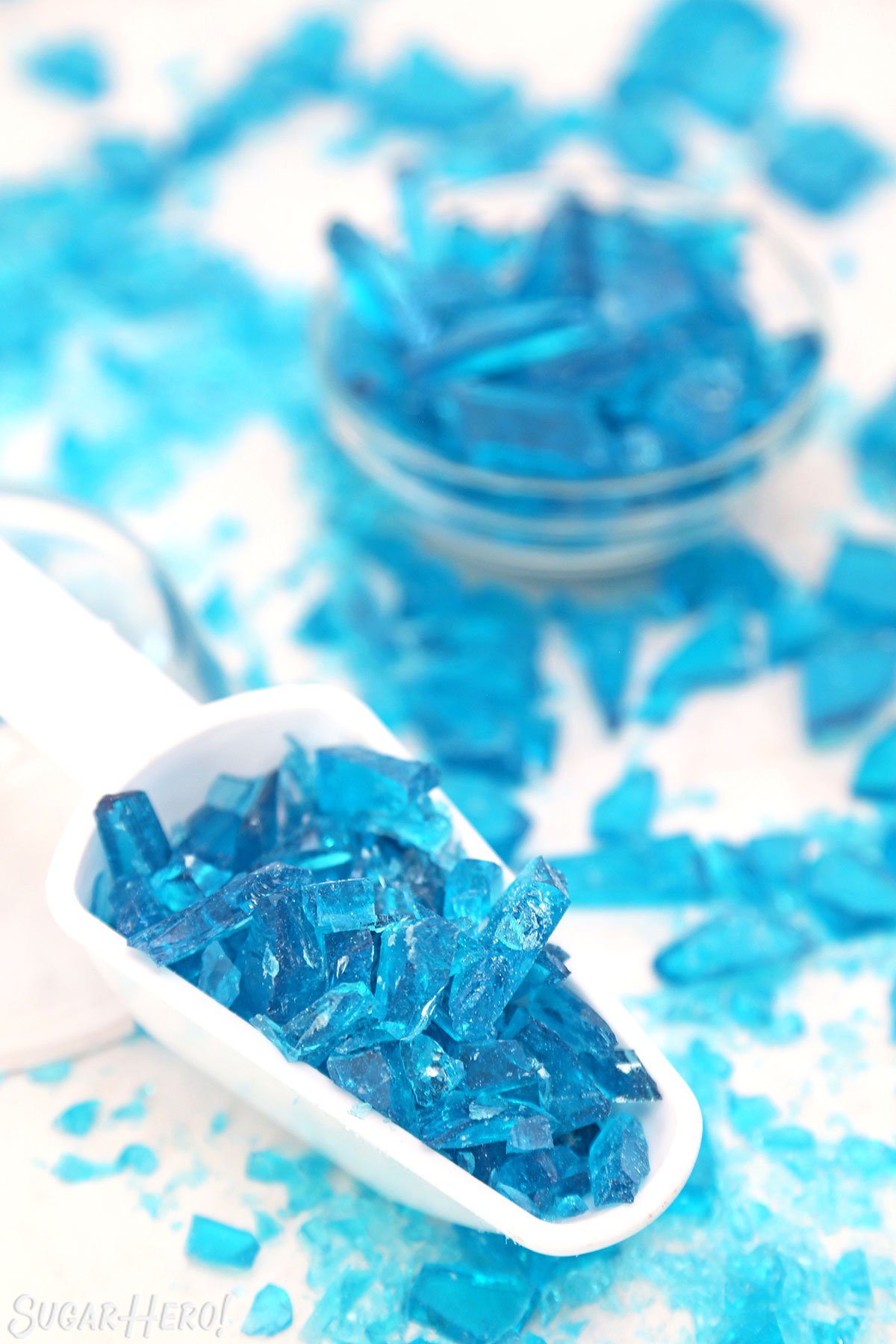
💙 How to make blue rock candy
This rock candy recipe is inspired by the television show Breaking Bad. As any viewer knows, the plot revolves around the blue-tinged crystal meth created by chemistry teacher Walter White and his student-turned-partner Jesse Pinkman. The meth is so pure, so potent, that it changes the entire southwestern drug trade and, eventually, the very lives of its creators.
As a fan of both sugar and television, imagine my delight when I found out that the “meth” used in the show is actually rock candy. Too perfect! So way back in 2012, at the height of Breaking Bad mania, I decided to create my own rock candy recipe, modeled after the Breaking Bad drug, for a viewing party with friends. Since it was first posted a decade ago, hundreds of people have made it for parties and Halloween costumes. Here is just a small sampling of the readers who have made it, loved it, and sent in pictures:
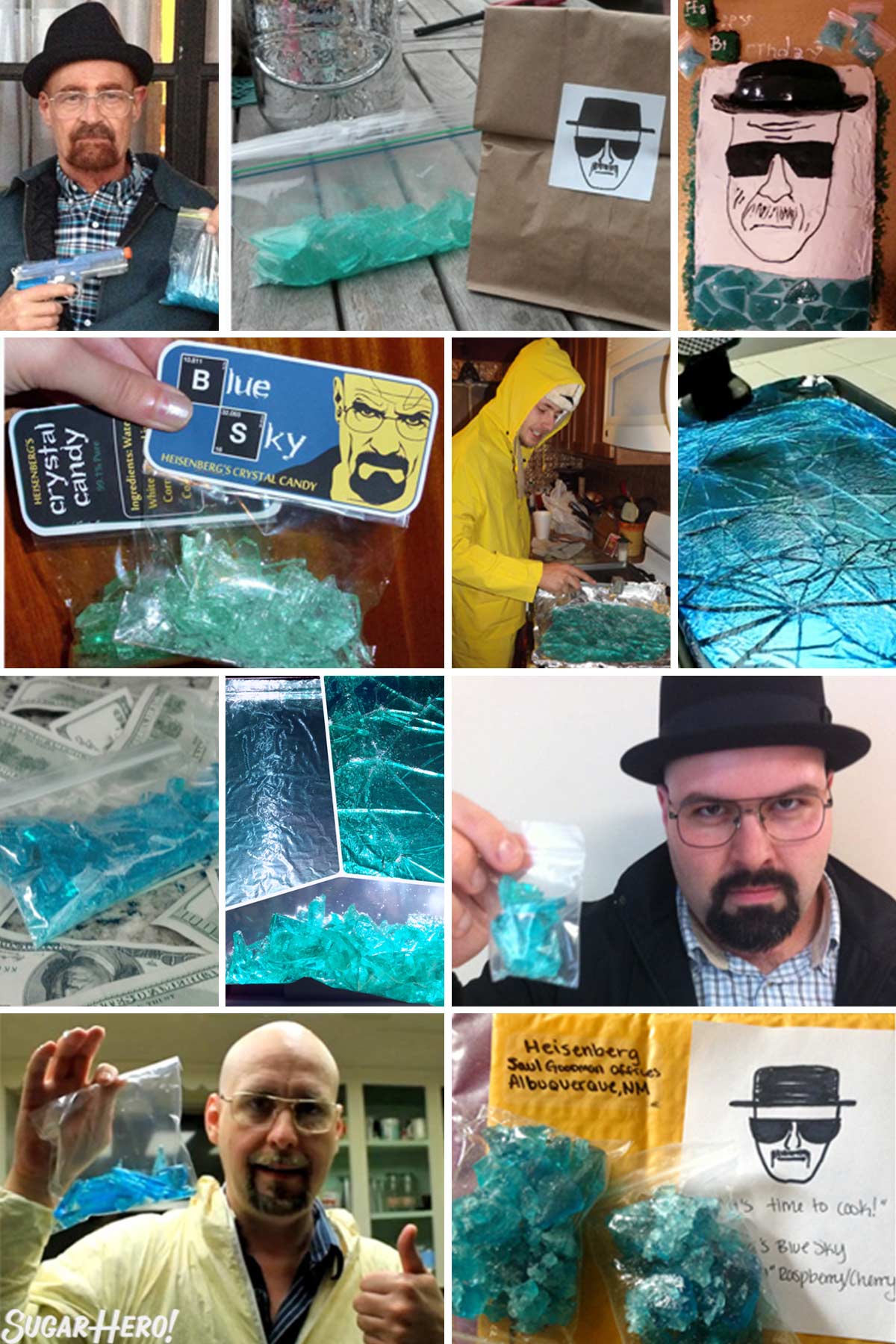
Although Breaking Bad is now off the air, this recipe remains a popular one, so it seemed overdue for an update. I’ve revised the post and recipe to make it more thorough, detailed, and helpful for YOU, my budding little Heisenbergs!
How to rock your candy-making
Rock candy is not difficult to make, and even beginning candy makers can do it successfully on their first try. Here are a few things you can do to ensure success:
- Read the recipe before beginning. This might sound obvious, but you’d be surprised! Once the candy hits a certain temperature things move very fast, and you want to be prepared to act right away, not be stuck reading the next step.
- Use a candy thermometer. More on this below, but it is the #1 tool that will guarantee you success.
- Read the Tips & Troubleshooting sections right before the recipe. Overwhelmingly, when people have trouble with this recipe, it is caused by a few very common mistakes, and knowing what these are in advance will help you avoid them.
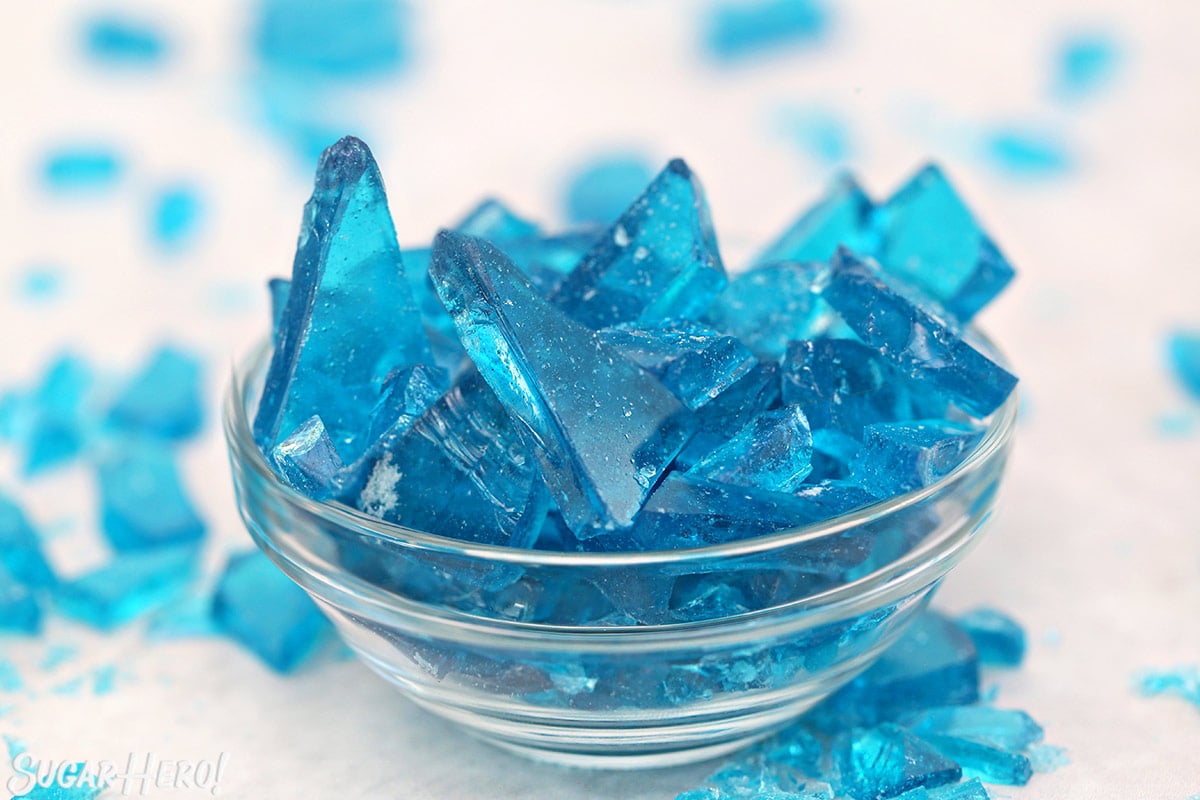
Table of Contents
🧾 What You’ll Need
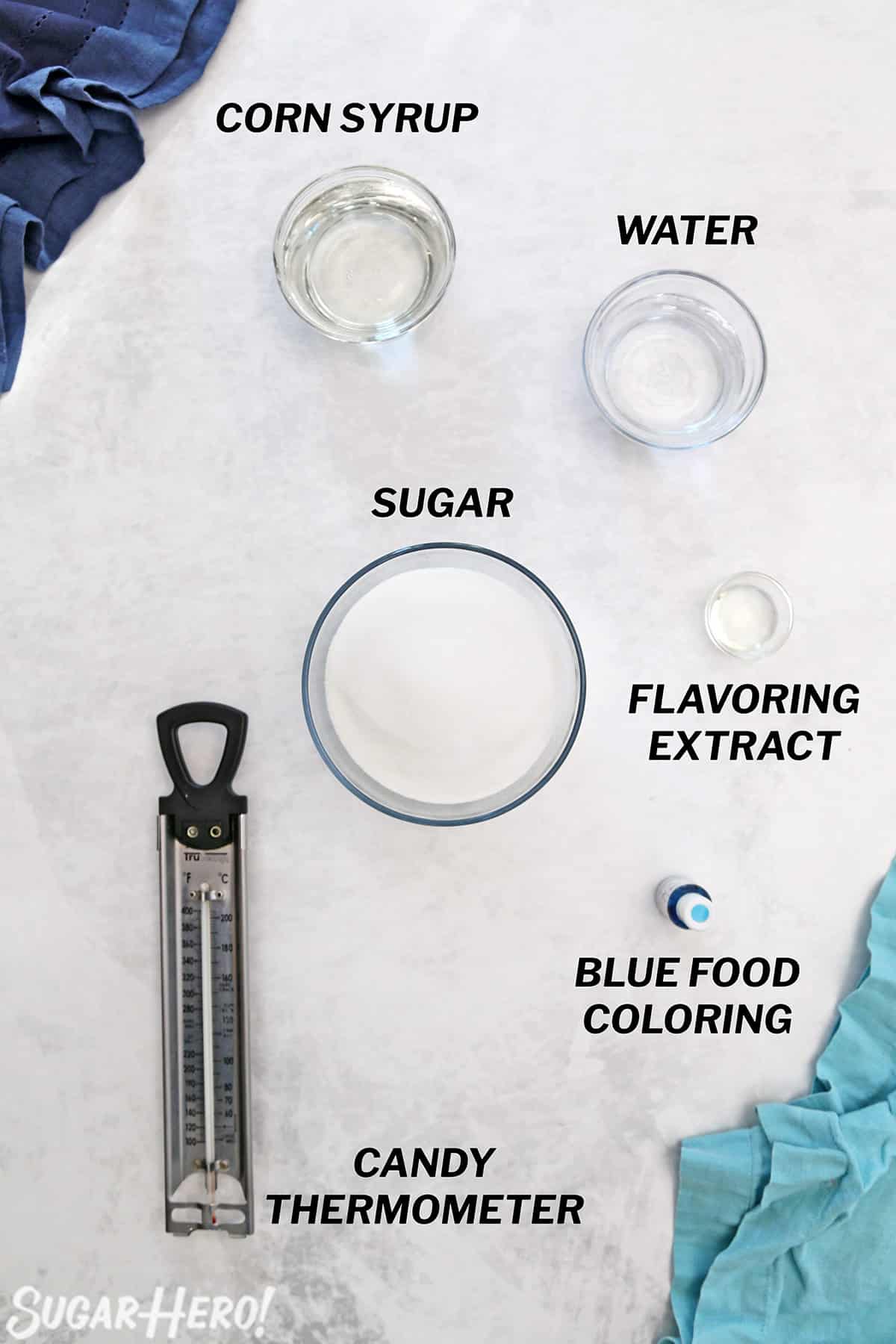
Ingredients & Equipment
Here’s what you need to know as you gather your candy-making supplies. (Links are affiliate links and I earn a small commission from qualifying purchases.)
- Corn syrup: Light corn syrup helps prevent the sugar from crystallizing. If you are not able to easily find it, golden syrup or glucose syrup is a good substitute. Note that golden syrup has a yellow tinge and is likely to turn your finished candy greenish-blue.
- Granulated sugar: Not all sugar is created equal. Some granulated sugar is made from cane sugar, and some comes from beets. My strong preference is to use 100% cane sugar — in my experience, this gives more reliable, consistent results. If your sugar package does not specify, chances are that it is beet sugar or a mix of both.
- Clear flavoring extract: If getting a blue color, like on the show, is important to you, you’ll want to be sure you’re using clear flavoring extract. Brown extracts like vanilla will give your candy a yellowish tinge. See the Flavoring section below for a list of clear flavoring suggestions.
- Blue gel food coloring: I always make my candy with Americolor Sky Blue gel coloring, and feel confident recommending this brand and color. Liquid food coloring (ie, the type found in most grocery stores) might not produce the color results you’re after.
- Candy thermometer Not optional! A candy thermometer is the #1 tool you will need to make perfect rock candy. You can buy an inexpensive one from the grocery store (like this model). If you will be making candy regularly, it’s worth it to invest in a nicer thermometer. I have and love the ChefAlarm, because it alerts me when I’m nearing my finished temperature. A thermometer helps you monitor the temperature of the frying oil, so you’ll have successful doughnuts every time. If you are new to using a thermometer, check out my guides for how to use a thermometer and how to test and calibrate a thermometer correctly.
📋 How to Make Rock Candy
Here’s an overview of how to make this blue rock candy, and full instructions are included in the recipe card down below.
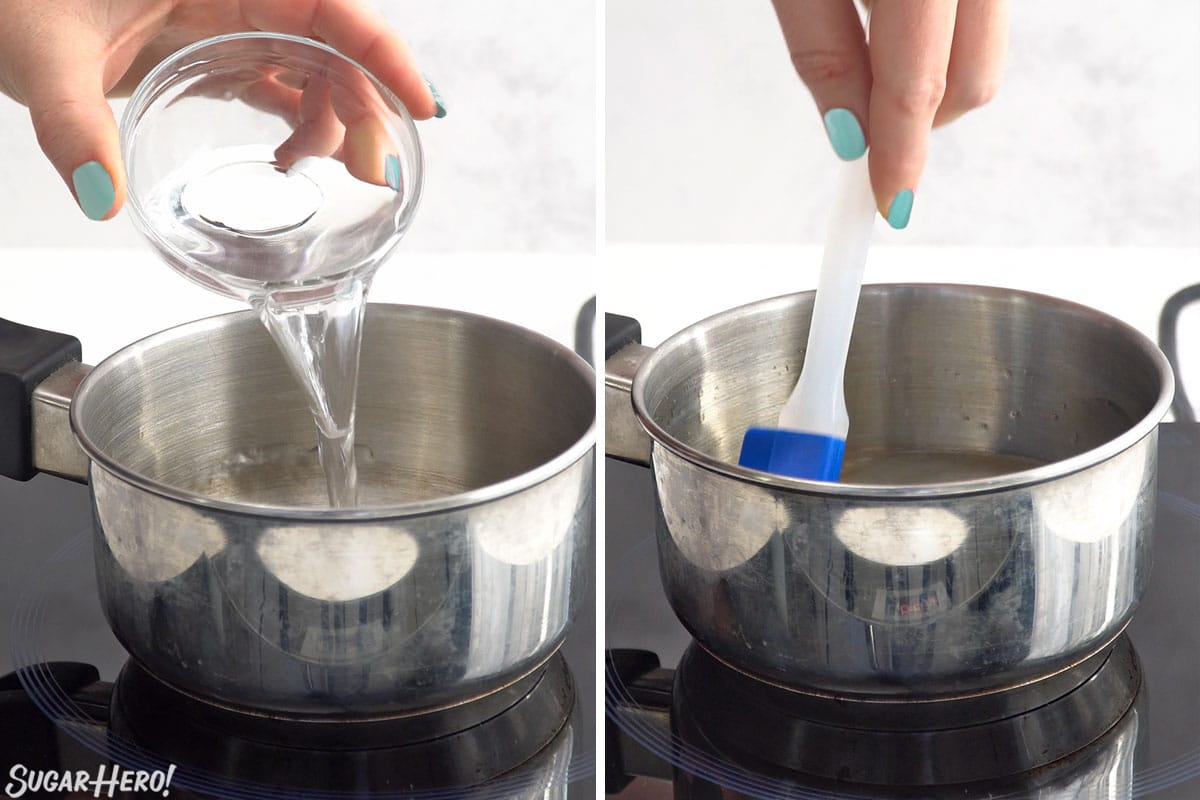
Make the sugar syrup
- Combine water, light corn syrup, and granulated sugar in a medium saucepan over medium-high heat.
- Stir until the sugar is moistened and dissolves.
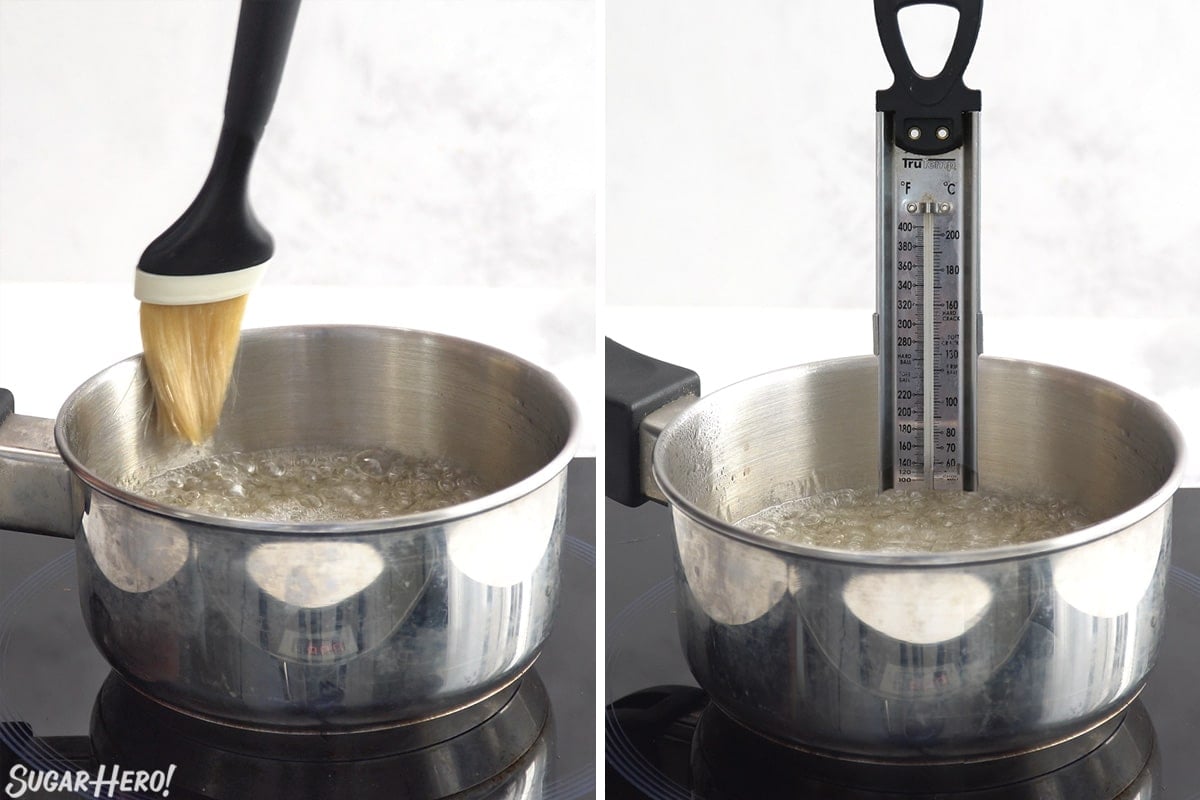
- Brush down the sides of the pan with a wet pastry brush – this will remove any stray sugar crystals. Sugar crystals in the pan can cause your whole batch to crystallize.
- Once it comes to a boil, insert a candy thermometer. From this point on, do not stir the candy.
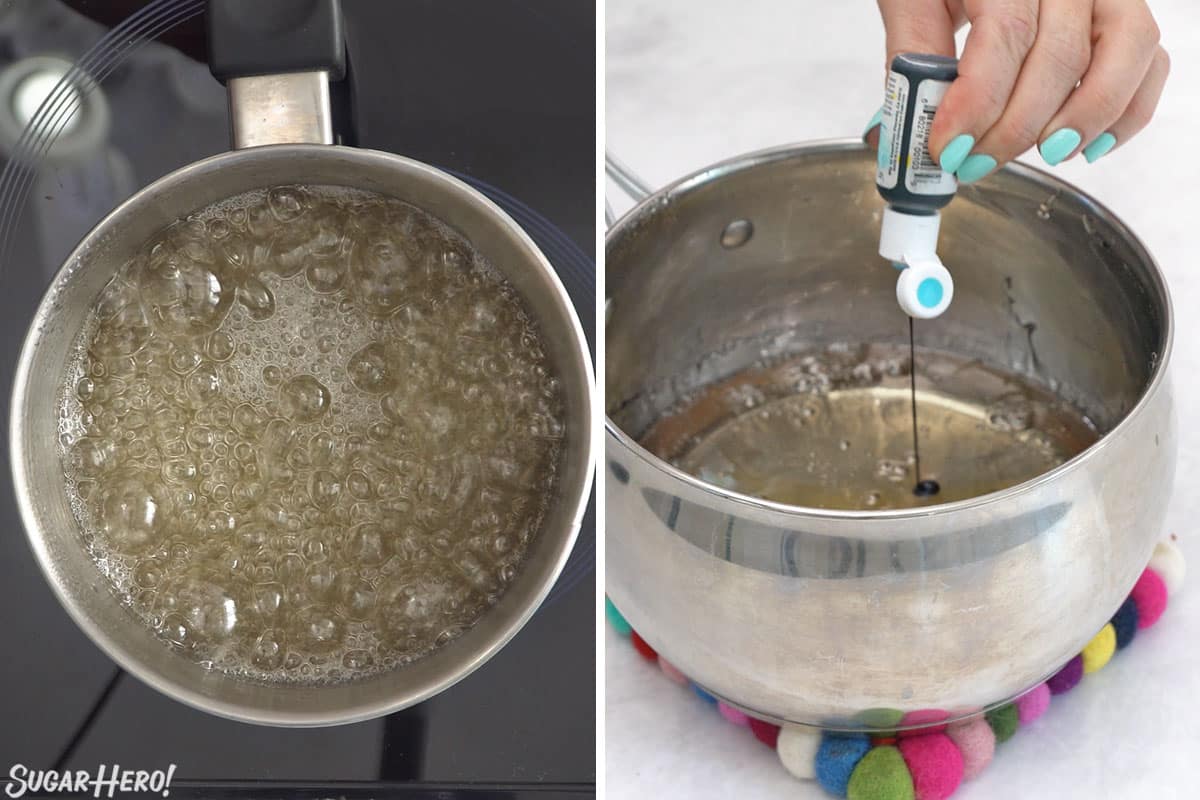
Cook and add coloring
- Cook the candy until it reaches 290 F on the thermometer. It should be a light yellowish color.
- Immediately remove the pan from the heat. Let it sit for a minute, until the rapid bubbling stops, then add flavoring extract and blue gel food coloring.
- Stir well until the color is evenly distributed.
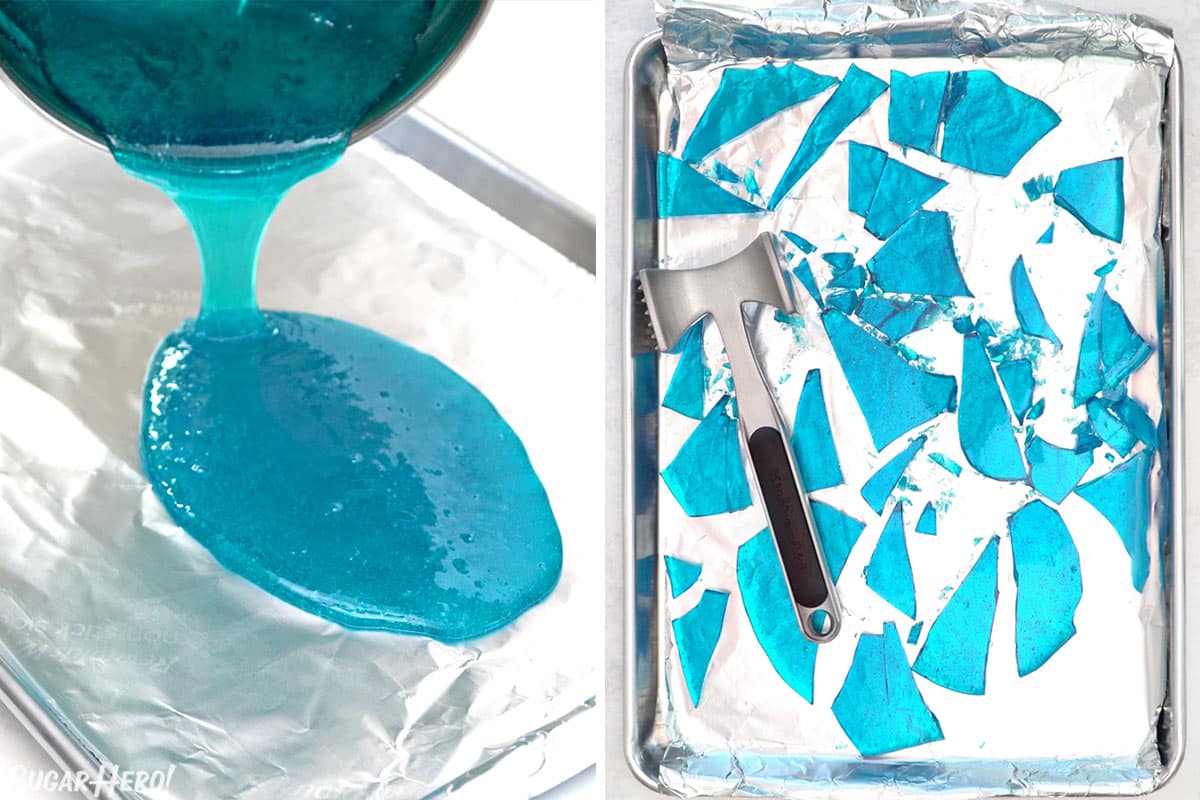
Pour and cool
- Pour the hot candy out onto a baking sheet covered with foil. You can spread it into a thinner layer with the spatula if you’d like.
- Let the candy cool completely at room temperature, until it is set and hard.
- Use a knife or kitchen mallet to smash it up into smaller pieces.
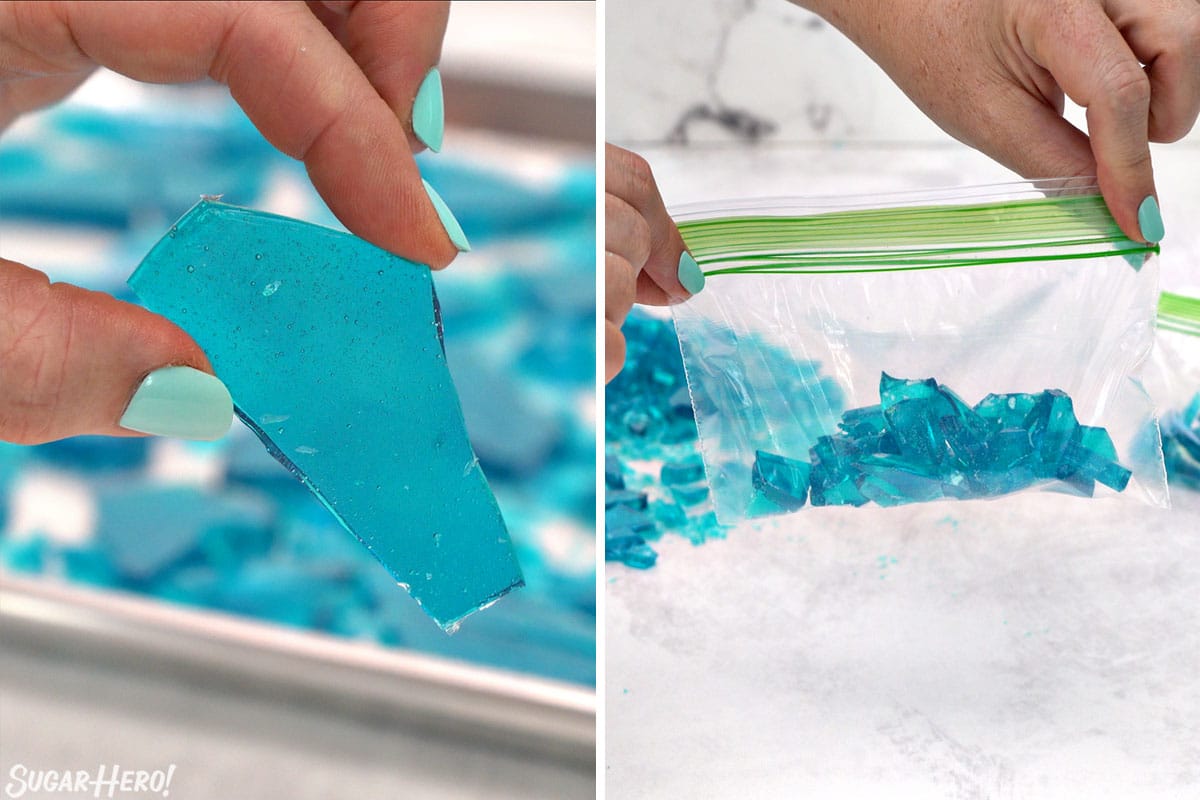
- This candy is easiest to eat in large pieces, so some people prefer to leave it in big chunks. If you want to be more accurate to the show, you can crush it up into smaller chunks.
- For optimal awesomeness, I recommend serving this in small baggies at a Breaking Bad viewing party.
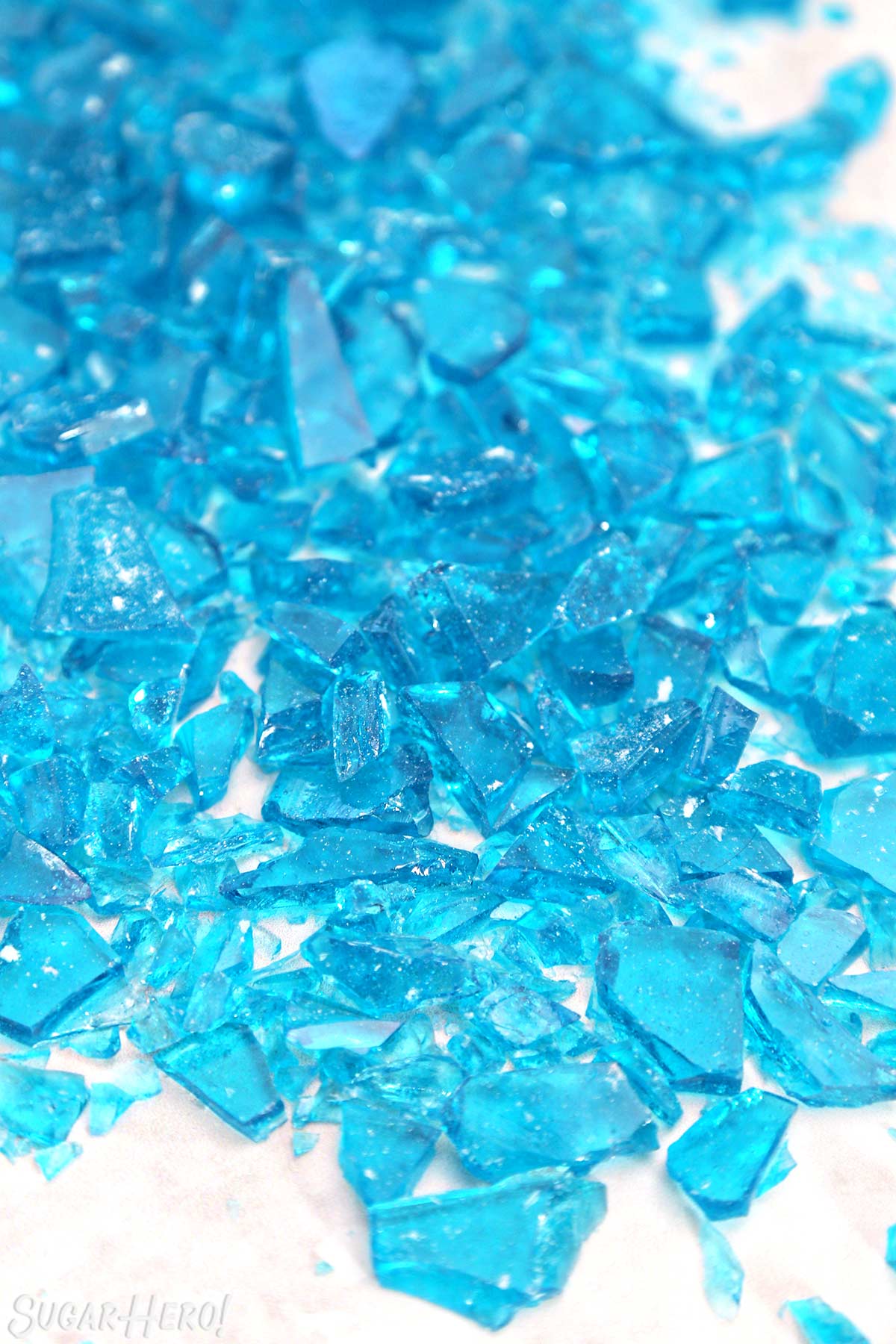
😋 Flavoring Recommendations
Clear flavoring is a must if you want your candy to stay clear and blue. You can always use clear vanilla, which is often available at cake and candy supply stores, and some larger grocery stores. It is imitation vanilla, so the flavor isn’t as great as real vanilla extract, but if you want vanilla candy, it’s your best bet.
My personal favorite is fruit flavors, since it seems like such a natural choice for hard candy. Here’s a partial list of clear candy flavorings. I like LorAnn because I think the quality, consistency, and flavors are great, but you can of course use any clear flavoring or extract brand that you like. Many of the larger LorAnn bottles are tinted so you can’t tell the color inside, but most of the 1-dram bottles are clear, so you can either view them online to check the color, or order them as an experiment before committing to a larger bottle.
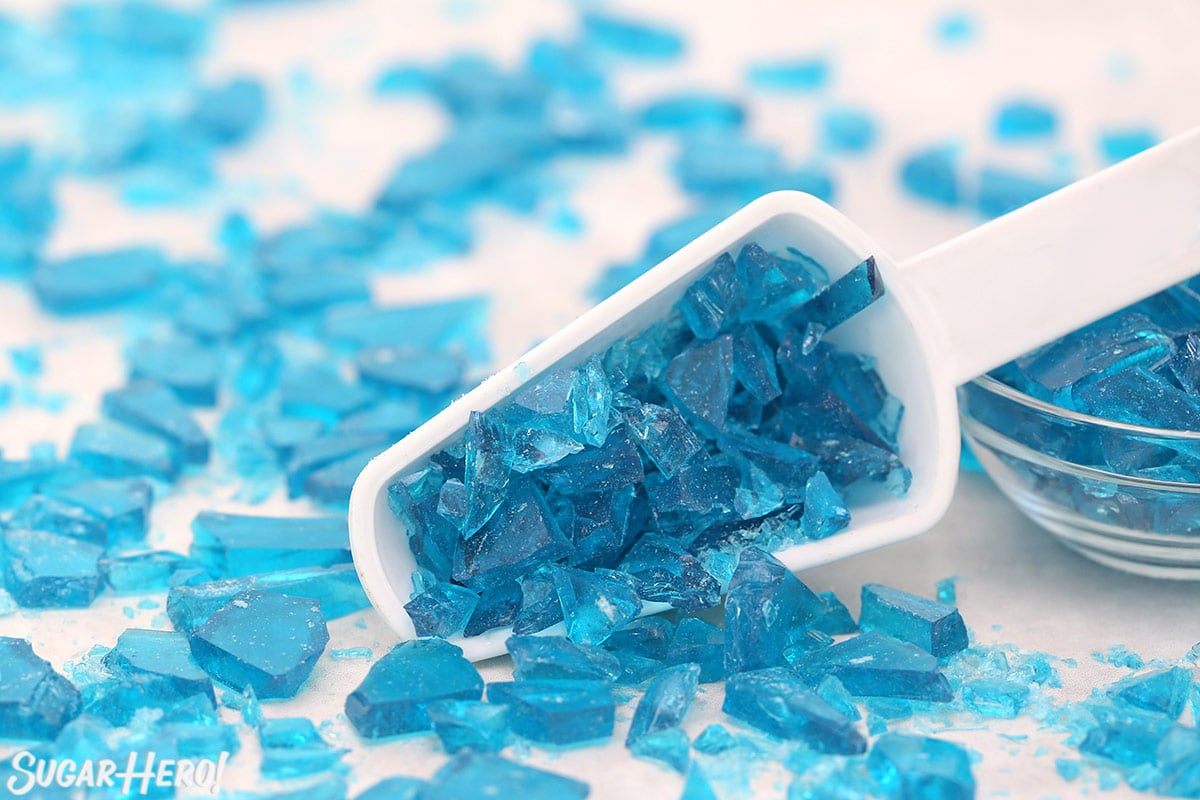
💡 Tips
Safely working with hot sugar
Hot sugar can be extremely dangerous — the temperature gets very high (290° F in this recipe!) and because it is a thick and sticky substance, if you accidentally get some on your skin, it doesn’t rinse off quickly, which can lead to serious burns.
Because of this, this is not a good recipe to make with smaller children. It’s also a good idea to have a bowl of ice water handy while the sugar syrup is cooking, so if you’re accidentally burned, you can immediately dunk your hand and stop further burning. And as always, be alert, deliberate, and careful with your movements in the kitchen.
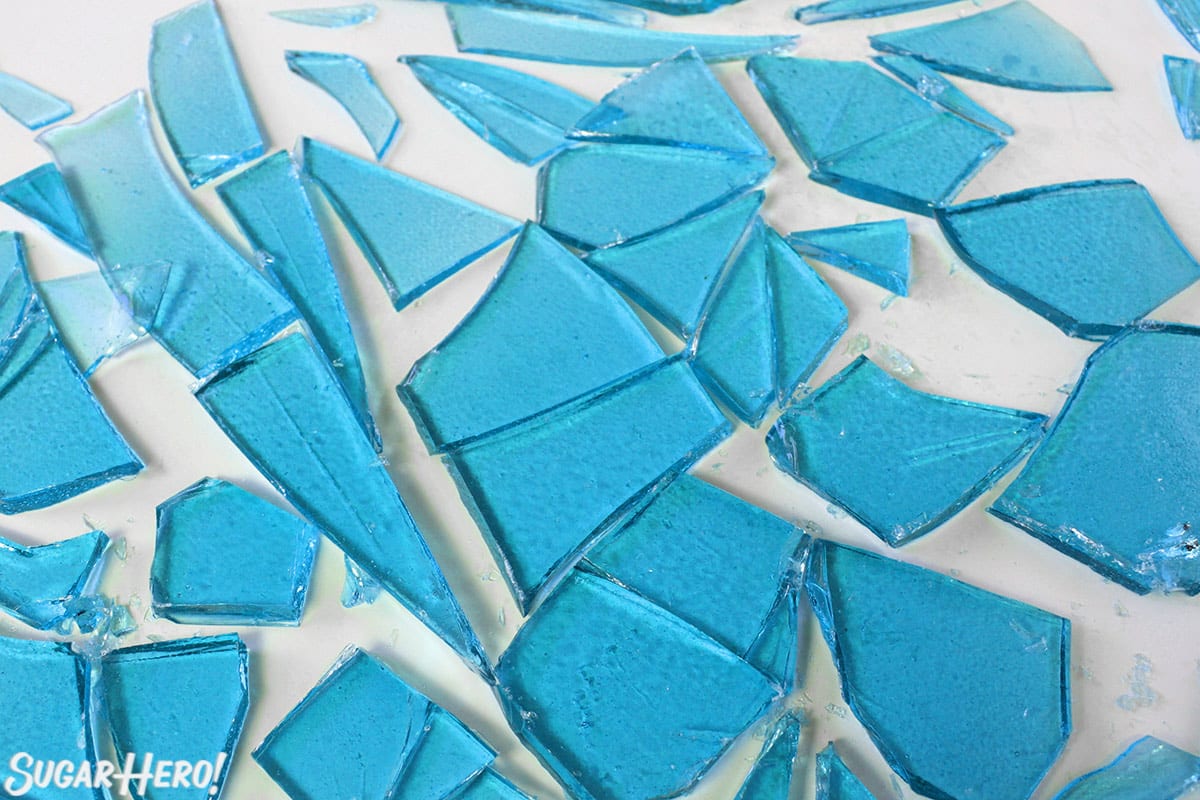
Testing your candy thermometer
It’s important to regularly test your candy thermometer for accuracy. Testing is especially important if you live at a higher altitude, but even at sea level, thermometers can become inaccurate over time. Having an accurate thermometer is essential to successful candy-making.
To test your thermometer, bring a pot of water to a boil, insert the candy thermometer for a minute, and then take a reading. At sea level, water boils at 212° F. If your thermometer doesn’t show 212°, calculate what the difference is. For example, if your thermometer reads 208° in boiling water, you know that you have a difference of -4 degrees in your thermometer. Going forward, you should subtract 4 degrees from any temperature written so that yours is accurate. In this example, if something needs to be cooked to 300° F, you only need to cook it to 296° F on your thermometer to get the right result.
The secret to easy candy removal
This isn’t a necessity like a candy thermometer, but it is a tip that can make your life a little easier! When making hard candy, I like to cover my baking sheets with non-stick foil. Hard candy can be sticky and difficult to remove from regular foil, but non-stick foil is magic, and the candy peels right off!
Other alternatives are to use a silicone baking mat, or spray regular or heavy-duty foil with nonstick cooking spray before beginning.
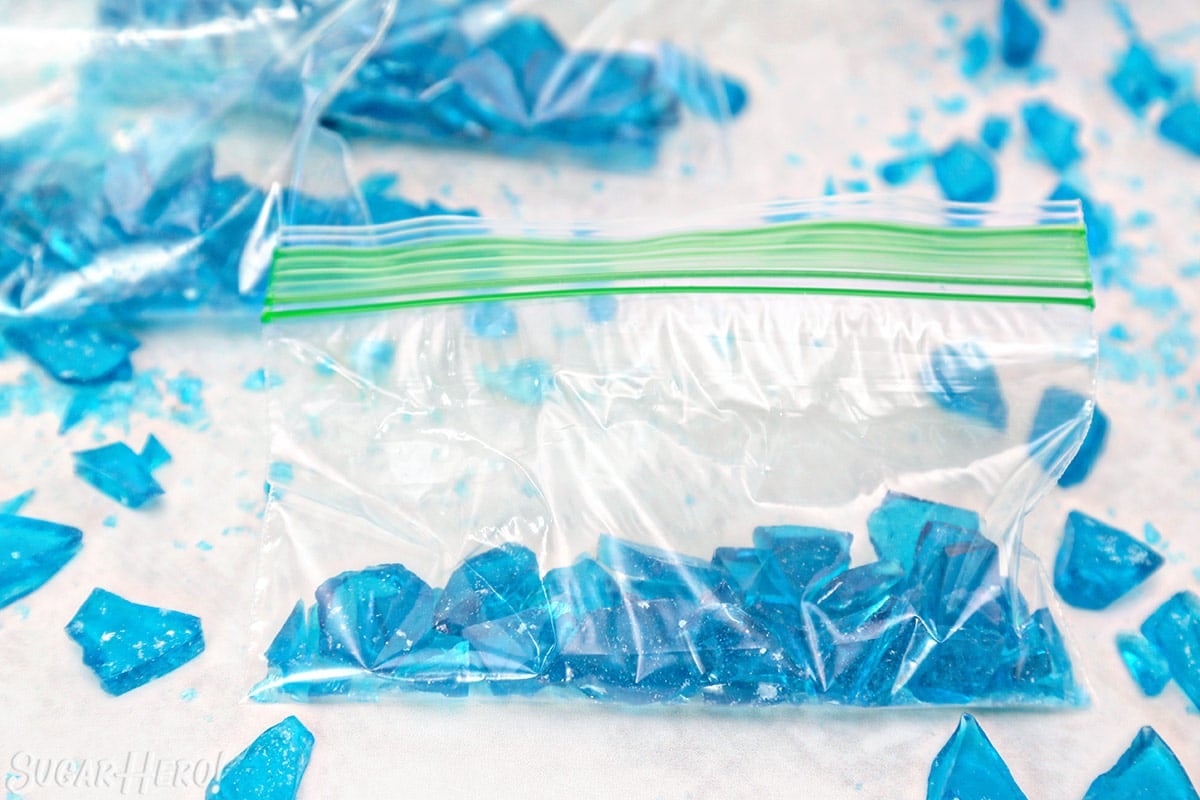
💡 Troubleshooting
Here are some common questions/difficulties people have had with this recipe, and my suggestions for how to prevent them.
This is the #1 problem people have with this recipe. There are 2 possible culprits: overcooking the candy, and using the wrong food coloring.
First, overcooking. The sugar syrup, if allowed to cook to a high temperature, will eventually turn yellow, then amber, then brown. This recipe calls for syrup to be cooked to 290 F, which should produce a near-colorless mixture that will not interfere with food coloring. (It will have a slight yellowish tinge.) If your candy is already a yellow or brown color when you’re adding the food coloring, chances are you have overcooked it, and the yellow color of the candy will mix with the blue dye and turn your candy green. The solution is to check to make sure your thermometer is accurate (see the Tips above) and to watch the candy like a hawk when it’s cooking.
Secondly, using the wrong food coloring. I have made this several times with Americolor Sky Blue, and have always had the color turn out well. I can’t guarantee other colors or brands will turn out the same. Liquid coloring, especially, can be weaker and can produce a greenish shade.
Here are a few colorings other readers have recommended: one reader says that the neon blue McCormick’s liquid food coloring produced a great blue color. She also recommends using a packet of Duncan Hines Frosting Creations in Cotton Candy, stirring it in at the very end and omitting any other flavoring and coloring. Another reader had great success with Adeco brand Electric Blue, and recommends using 5 drops for a great blue color.
If the candy is too soft or doesn’t set, it has not been cooked enough. This recipe really, truly should be measured using a candy thermometer, and if you are using one and still having problems with soft candy, test the accuracy of your thermometer, and double-check that you used the correct quantities and temperature the recipe calls for.
If the candy is initially fine but quickly becomes sticky, humidity is probably the problem. Hard candy works best in a dry environment–sugar soaks up moisture from the air around it, and hard candy quickly becomes wet and sticky in the humidity. Don’t attempt this candy on a humid or stormy day. It should always be stored in an airtight container at room temperature, to keep it as dry as possible. You can also buy silica gel packets to store with your candy to absorb moisture and keep it from becoming sticky.
If your candy is crumbly or sandy instead of hard and crunchy, or opaque instead of translucent, then it has crystallized during the cooking process. Nothing is wrong with it, and it will still taste fine, but the appearance and texture may not be what you want.
Crystallization happens when sugar crystals form during the cooking process. This can happen due to stirring too much while it cooks (once it comes to a boil, you should not be stirring it at all), or not wiping down the sides of the pan with a wet brush to remove the crystals, or just accidentally having stray crystals on the candy thermometer, spatula, or pan. The corn syrup in the recipe helps prevent crystals from forming, so if you substitute other ingredients for the corn syrup, you might find that crystallization is more likely.
This candy won’t spoil, but the texture will become softer and stickier over time. For the best results, store your candy in an airtight container at room temperature for several weeks. If you live in a humid climate, consider picking up some food-safe silica gel packets to store with the candy, to absorb moisture from the air and keep your candy fresh.

🍬 More Candies You’ll Love
Now that you’re a candy-making expert, put those skills to good use and try one of our other popular candy recipes!
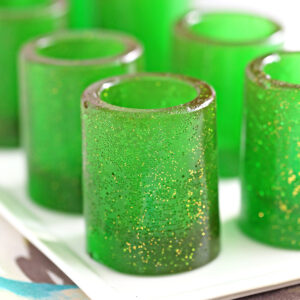
DIY Candy Shot Glasses
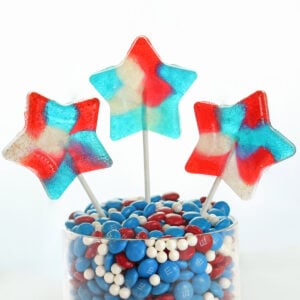
Easy Homemade Lollipops
Leave a Review!
If you make this recipe, let us know! Leave a ⭐️⭐️⭐️⭐️⭐️ rating on the recipe below, and leave a comment, take a photo and tag me on Instagram @elabau, or use #sugarhero on IG!
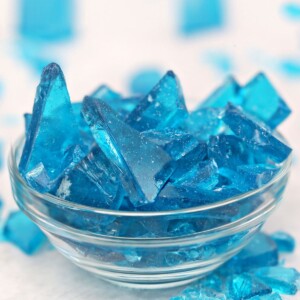
Breaking Bad Blue Rock Candy
Ingredients
- 1/2 cup water, (4 fl oz)
- 8.25 oz light corn syrup, (3/4 cup)
- 14 oz granulated sugar, (2 cups)
- 2 tsp clear flavoring extract
- blue gel food coloring, I used Americolor brand
- Candy thermometer
Instructions
- Line a baking sheet with foil and spray the foil with nonstick cooking spray, or use non-stick foil.
- In a medium saucepan, combine the water, corn syrup, and granulated sugar. Place the pan over medium-high heat, and stir until the sugar dissolves.
- Once it comes to a simmer, brush down the sides with a wet pastry brush to prevent sugar crystals from forming. Insert a candy thermometer.
- Continue to cook the candy without stirring until it reads 290 degrees Fahrenheit (143 C) on the thermometer. Watch the temperature carefully–a lower temperature might produce sticky candy, while a higher temperature runs the risk of producing green candy!
- Once at 290, take the pan off the heat and let it sit for a few moments, until rapid bubbles stop breaking on the surface. Add the flavoring and a drop or two of food coloring, and stir everything together.
- Pour the candy onto the prepared baking sheet and spread it into a thin layer. Let it set completely at room temperature.
- Once set, break it into small pieces. For the complete Breaking Bad experience, place the pieces in a large zip-top bag and smash them with a rolling pin until they are crushed, and place in small baggies to serve.
- Store the candy in an airtight container at room temperature.
Video
Measuring Tips
Our recipes are developed using weight measurements, and we highly recommend using a kitchen scale for baking whenever possible. However, if you prefer to use cups, volume measurements are provided as well. PLEASE NOTE: the adage “8 oz = 1 cup” is NOT true when speaking about weight, so don’t be concerned if the measurements don’t fit this formula.
Want to learn more about baking measurements and conversion?
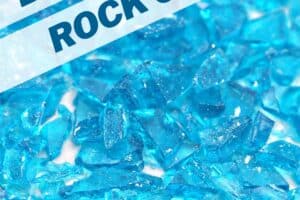
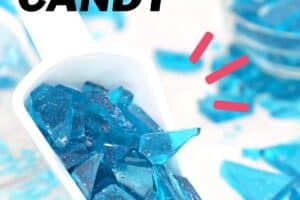
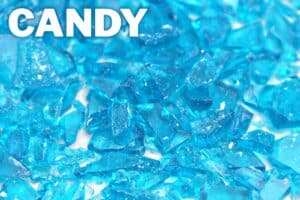
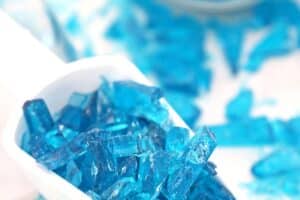
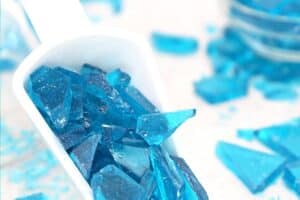
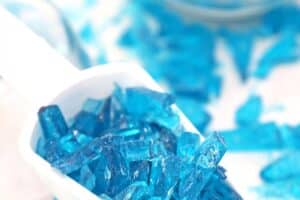
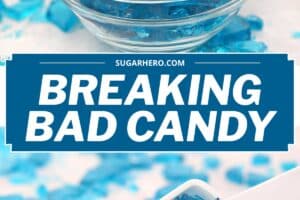
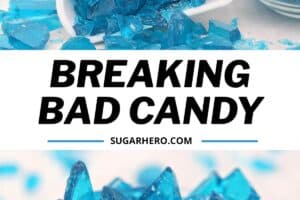
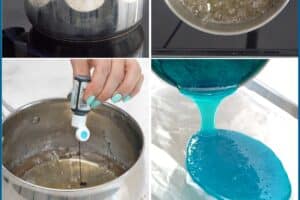
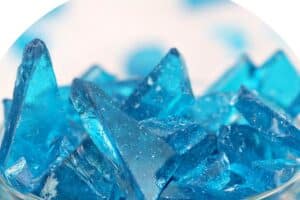
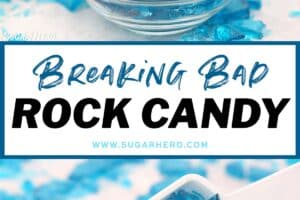
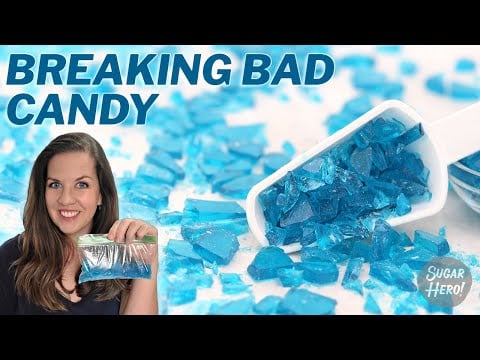
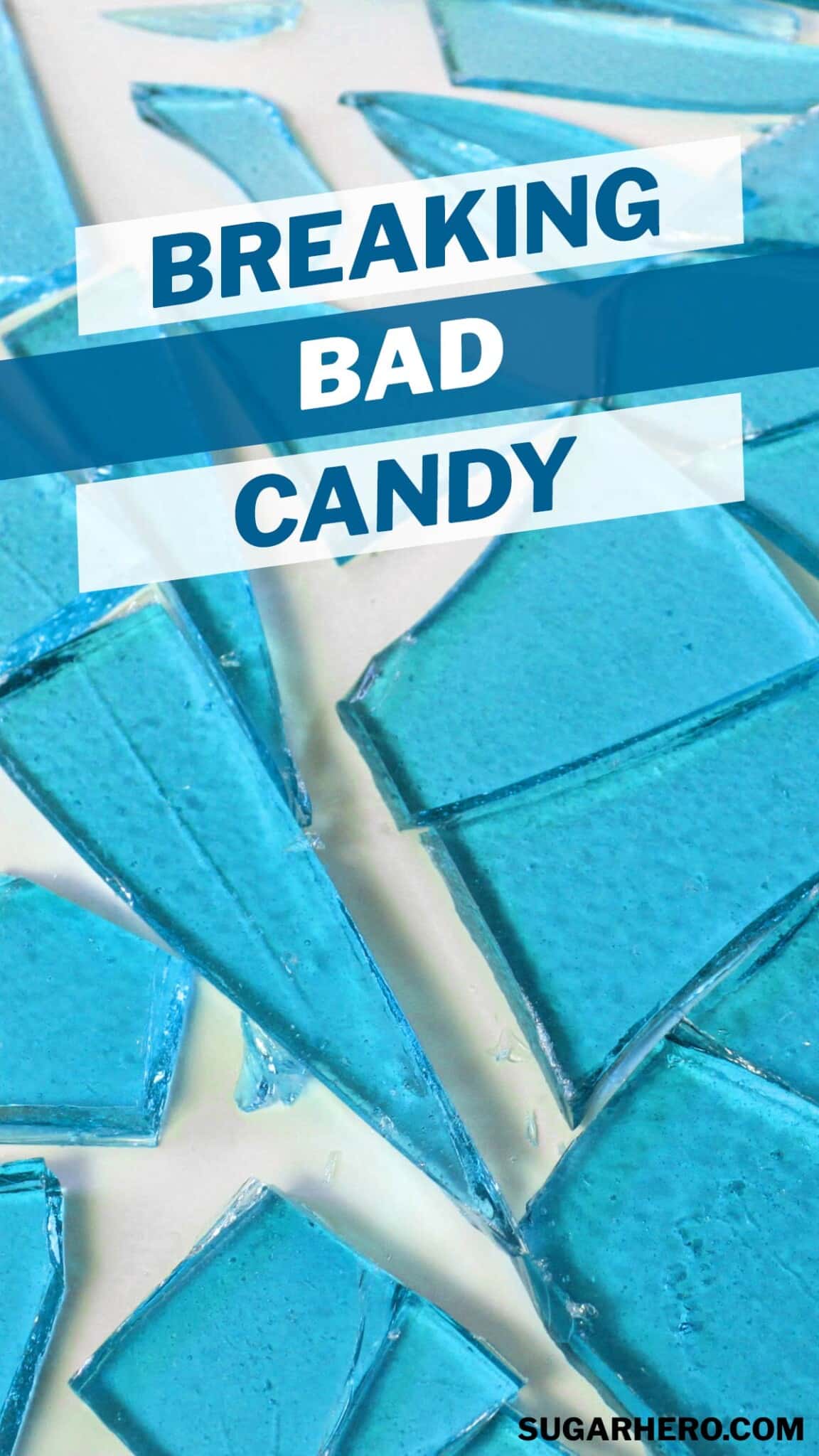
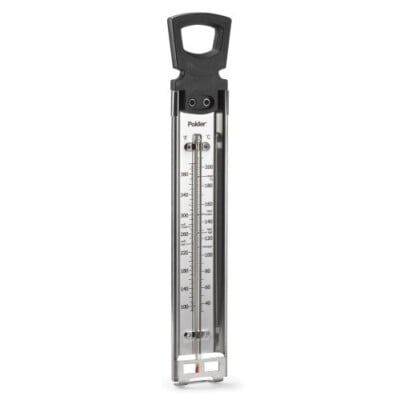
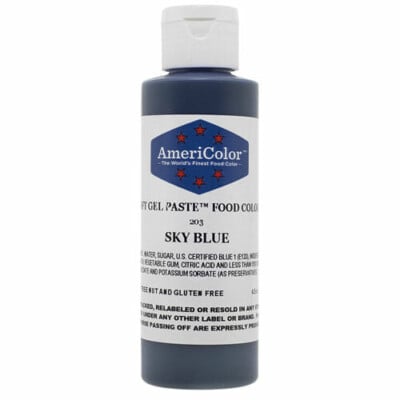
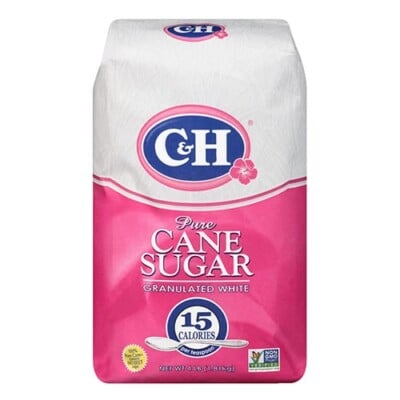
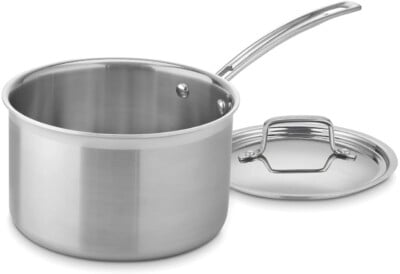
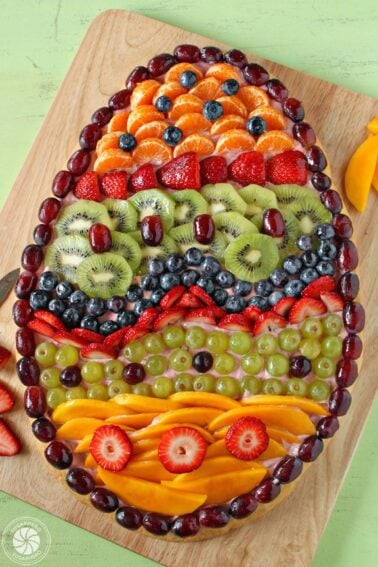
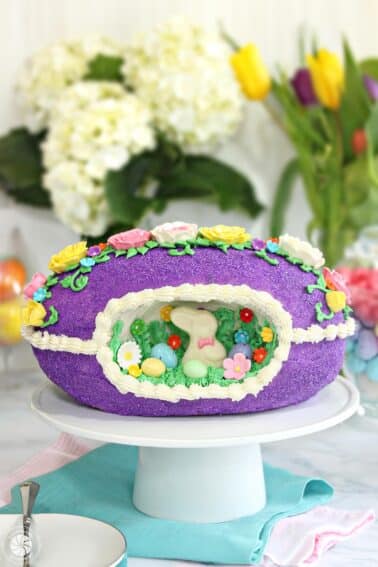
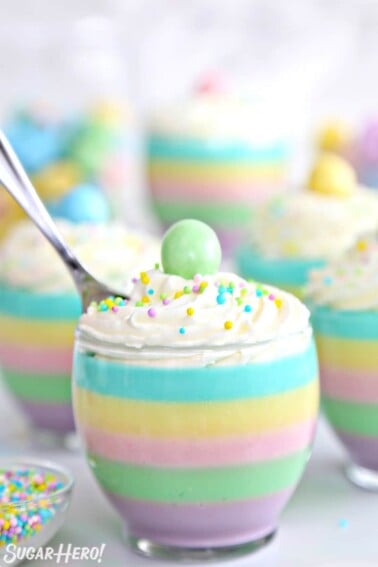
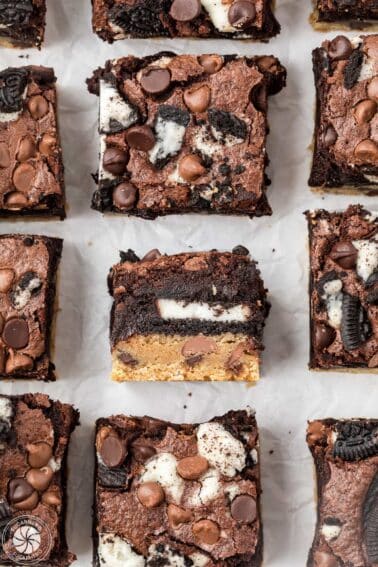












I have a few questions because I know incredibly little about cooking or baking etc.
#1 What size baking sheet should I use for this recipe?
#2 How much hard candy does the recipe make?
#3 Do I have to worry about colors from the flavoring extract or does that all come in the same color?
Hi Keith,
Any large baking sheet will work–I used a half-sheet (about 13×18) but it doesn’t matter too much, because you don’t need to spread the candy all the way out to the edges–just get it nice and thin. You could even do it on a heat-proof countertop, but I like a baking sheet because air can circulate underneath to cool it down quickly, plus you can move the candy as it sets if you need to.
This recipe makes a little over a pound of hard candy. I’m not sure what volume that is (it really depends on how much you smash it up!) but I would say it’s enough for a dozen small baggies, easily.
Almost all flavoring extracts are clear, or so light as to not make a difference. Some, like vanilla, chocolate, or maple, are a dark brown color, but most of the fruity ones I’ve encountered are clear.
Also, I’ve amended the recipe above with a note about the coloring–some folks are having trouble with their candy turning green, so if you’re very concerned about getting the perfect blue color, please read it!
I’ve tried to make this twice now and everytime it comes out green. Is it going green because the mixture turns yellow while its cooking and when I add the blue colouring, it makes green (blue+yellow=green)?
Hi Chris,
One problem might be overcooking–the more you cook, the closer to caramel it gets, and the yellow color might be turning it green. Also, What type of food coloring are you using? From comments other people have made, it seems like food coloring is inconsistent, and some coloring does produce a green color when mixed with the slightly yellow candy.
I used Americolor Sky Blue gel coloring to get mine blue. Another commenter had good success with the NEON blue McCormick liquid food coloring. She also tried a package of Duncan Hines Frosting Creations in Cotton Candy, instead of using additional coloring or flavoring, and said that worked well.
My product looks great but is very sticky, any idea how to un-sticky them?
Hey! Thank you for the recipie! I tried this the first time to day and it looks like i got a more green like color. Do I use wrong kind of coloring? Or is it may be because the syrup I used is to dark?
And I just don’t understand how you can get it to 300 degrees! Any tips?
Hi! Did you read the note at the end of the recipe about the coloring? Some food coloring does turn the candy green instead of blue. I recommend reading the note above, and trying to track down Americolor Sky Blue gel coloring if getting a light blue color is important!
Also, I’m not sure what you mean by get it to 300 degrees? This is measured in Fahrenheit, and 300 F is a pretty typical temperature for making hard candies. The sugar syrup should be nearly colorless or a light gold color at 300. Sugar starts to caramelize and get darker as you get above 300, but it shouldn’t be burnt or brown at 300 F. When making caramel sauce I take sugar to 340-350, so 300 isn’t unusual. Are you using a different scale? Or have you checked your thermometer? Here’s one way to check your candy thermometer to make sure it’s working properly:
http://candy.about.com/od/candybasics/ht/How-To-Test-Your-Candy-Thermometer.htm
Can’t wait to try this. I just shaved my head and I’m going as Walter White for Halloween. This will make the perfect accessory!
That is an awesome costume idea! I hope you have the Heisenberg fedora too?
I already had a shaved head and Gotee and went last year as Walter. I bought blue rock candy from a candy store and put into 1 ounce baggies. Wore a blue hazmat suit and a Respirator. My friends loved the costume so much they want me to revise it for this year. I am upgrading to the Yellow Hazmat suit and I am going to make my own Blue Sky this time. Thanks for the tips…. Going to take picks with me in the Suit and a sheet of Blue Sky in my hands 🙂
Is the flavoring necessary? I feel like most rock candy is just sugary flavor and I have no idea how it’ll taste with the flavoring.
Nope, totally not necessary–you can skip it and you’ll have a plain candy that just tastes like basic sugar. I just add it since most folks I know prefer a little flavor.
I spoke to Elizabeth a few times about this recipe, and it worked out great for my needs. I also got a really good color from Adeco brand Electric Blue food coloring. I used 6 drops for this recipe and it came out as a nice sharp blue when cooking at 285, but perhaps a bit deeper than the color they use for the show, so next time I’ll try 5 drops. That plus a half dram of LorAnn Key Lime flavor oil makes for a good time.
Thanks for sharing your experience, Frank! So glad it worked for you, and I have you to thank for the revised temperature recommendation. Let me know how the Halloween costume goes!
hmm i’ve tried to make this twice now and its not hardening even after several hours any advice on what I should do?
Hi Joaquin,
If it’s not hardening that means the candy wasn’t cooked enough. Did you use a candy thermometer, and get it up to 285 degrees Fahrenheit? At this temperature it should start hardening within a minute or two, and be completely hard after 30 minutes or so. If you did use a thermometer, it’s a good idea to test it to make sure it’s accurate. Here’s how:
http://candy.about.com/od/candybasics/ht/How-To-Test-Your-Candy-Thermometer.htm
Hi can you re-boil the candy that didn’t set?
Hi Gloria, You can try, but it’s not a fool-proof process. Reboiling it means the possibility of re-introducing sugar crystals into the candy, so it increases your chances of having a grainy or a gritty candy. It also means that the candy will probably have some green color tones, since cooking it a second time will most likely cause the sugar syrup to develop more of a yellowish tinge. All that being said, there’s no harm in trying, and you don’t have much to lose other than the time it takes to re-boil it!
I followed Elizabeth’s recipe as far as measurements for sugar, water, and corn syrup goes, and I just kinda winged it with the LorAnn flavor oil (I think 3-4 drops came out from my dram of key lime flavoring). I kept doing a crack test in a cup of cool water, by scooping some of the sugar mixture out of the pan, and dropping it into the cup. This in turn cools it down and you can test it for whether it’s pliable like taffy, or if it snaps like it should. I did this and as soon as my candy thermometer hit 285 degrees, I turned off the flame and poured it in a tray and it reached hard crack. I think the last crack test I did was at around 282-283 degrees as is, so there’s one way to test how it’s hardening, just keep dripping some in a cup of cool water so you can touch it, and see if it snaps when you bend it at room temperature.
We used the Duncan Hines frosting creations and it worked perfectly. Thanks so much for your tips. Looking forward to Breaking Bad on Halloween!
Awesome, Hope, thanks for the coloring feedback! So glad it worked out–happy BB Halloween to you. 🙂
How much of the frosting creations did you use?
I haven’t tried it with the frosting creations, I believe the people who did tried it used the entire packet, and omitted any other flavoring or coloring.
Excellent instructions; thanks!! A group of us are doing some BB characters for Halloween. I tried crystalizing rock candy on a string. Failed. Bought a candy thermometer & followed instructions exactly. Made 3 batches & looks exactly like your photos!
For food coloring, I used the Target store brand (1 drop) and it worked fine, doesn’t look green.
Great to know! I’ll add it to the list of recommended colors. 🙂